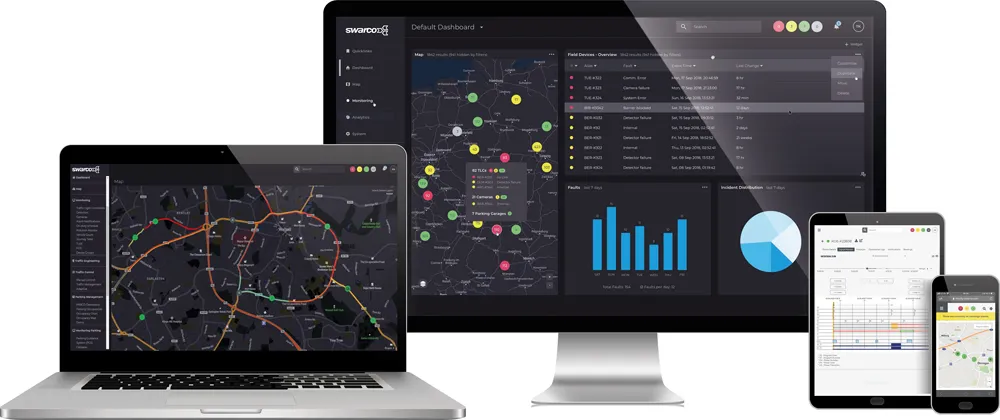
A series of road tunnels is taking shape to help relieve Istanbul from crippling road congestion, with an extensive array of safety and management systems operating from a single ITS platform. Nino Sehagic reports.
Traffic in Istanbul has historically been described simply as jammed. Severe congestion and chaotic use of available road space are characteristics of a city of more than one and a half million cars. Istanbul’s existing road network could not cope and was in urgent need of expansion, leading the Istanbul City Municipality to opt for rectifying matters with its ‘Seven Hills Seven Tunnels’ project.To overcome a lack of space for widening existing roads, a series of seven tunnels is being bored to take traffic beneath the city, with further aims of improving safety, travel times and traffic management overall, as well as reducing pressure from the city’s central district.
The first tunnels to be built, from Kagithane to Piyalepasa (1745 m long) and from Bomonti to Dolmabahçe (2195 m long), passing under the centre of Istanbul, were finished in 2008.
Management systems
Both tunnels are equipped with tunnel management and safety systems compliant with theTo help ensure a safe and controlled traffic environment, Istanbul’s tunnels are equipped with LED variable message signs on tunnel approaches, LED signalisation inside each tunnel, lane usage signs, an ERT (emergency roadside telephone) system, trans-illuminated SOS signs and a video surveillance system with automatic incident detection.
All of this equipment has been integrated into one management system, Telegra’s topXview. Complete integration has enabled implementation of a series of automatic reactions to incidents or events from the whole system and its subsystems. These responses are organised as scenarios covering a broad range of types of incident.
The ITS scenarios provide uniformity of handling emergencies as the system will always react in the same way to any given type of incident, ensuring fast and unambiguous system response. A simple rule is used: system alarms and suggests – operator confirms – system responds. With check lists and procedures provided, operators are guided through any emergency situation, eliminating risk of an inadequate response.
Scenarios programmed into the system relate to traffic accidents detected or notified, plus ‘special situations’ such as a stopped vehicle or pedestrian in the tunnel, a car travelling in the wrong direction, over-height vehicle approaching, or ice on the exit of the tunnel. There are ‘controlled application’ scenarios, including actions to allow emergency services and special convoys to pass unhindered through the tunnels, as well as general situation scenarios of traffic congestion and scenarios responding automatically to activation of fire alarms or fire extinguishers, air pollution and smoke detection.
System functionality
An example of how the Istanbul tunnel management operates would occur as an incident is detected by one of the many automatic detection systems. An operator immediately receives a video stream on an alarm monitor, verifies the situation and then selects the most appropriate response plan from a menu of options. Everything else is done automatically.If a tunnel or road section has to be closed, that message is dispatched automatically to drivers by a public announcement system, broadcast throughout the tunnel via a radio system. Messages are also displayed on LED displays within and on approaches to the tunnel. Road management and emergency services are automatically notified by an in-built messaging system, while notification of the tunnel closure is sent to local media as well.
New tunnel – new challenge
After several years of successfully implementing and operating ITS for two tunnels, the Istanbul municipality started work on the next major stage of the overall Seven Tunnels project in 2011. This third highway tunnel from Sariyer to Çayirbai is a 1950m long twin tube tunnel which will be connected with the Kagithane to Piyalepasa and Bomonti to Dolmabahçe tunnels through a linking road.The city of Istanbul plans to control all tunnels from its existing control centre. This means that each tunnel, as it is built, has to be integrated with a single traffic management software platform.
After equipping the tunnel with all necessary hardware equipment (from LED displays to video system) the integration will be done at various levels, from field device to highest control centre level.
This will ensure the fastest possible response times, completely independent within the control centre and allowing comprehensive reactions that influence each and every subsystem deployed.
The Sariyer to Çayirbai tunnel is equipped with more than 50 AID (automatic incident detection) camera, and signals are received from more than 700 different sensors, but full integration in one software platform is straightforward.
Integration at different levels enables specific automatic or semi-automatic reactions (system alarms and suggests – operator confirms – system responds) on each of those levels. Specific reactions are enabled by an intelligent alarm generator that incorporates the possibility of alerting on combination of events from different subsystems.
Istanbul’s tunnel management system is modular thus allowing new subsystems to be added, or for the system to be expanded to accommodate further tunnels and sections of road. Independent modules allow expansion to be done with very limited impact on the rest of the system.
Nino Sehagic is an engineer within Telegra’s strategic development department









